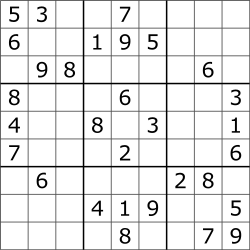Sudoku: History, Origins, and Evolution of the Game
History of the Sudoku Game
Sudoku, a number puzzle game that is very popular today, has a fascinating history that spans several countries and decades. The history of the Sudoku game starts from a very simple basic idea but requires intelligent and logical thinking.
The origins of Sudoku can be traced back to the late 18th century in Europe. The game was inspired by the Latin Square puzzle discovered by a Swiss mathematician, Leonhard Euler. Latin Square is an arrangement of numbers where each number appears only once in each row and column.
However, the modern version of Sudoku as we know it today, first appeared in Japan in 1984. The game was introduced by the Nikoli publishing company under the name “Sūji wa dokushin ni kagiru” which means “the numbers must remain single.” This name was later shortened to Sudoku, which in Japanese means “single number.”
Sudoku’s popularity exploded globally in the early 2000s when Wayne Gould, a former judge from Hong Kong, developed a computer program that generated Sudoku puzzles. Gould introduced the game to The Times newspaper in England in 2004, and from there, Sudoku quickly spread throughout the world.
Nowadays, Sudoku can be found in various media, from puzzle books, smartphone applications, to daily newspapers. This game is not only fun, but also provides a good mental challenge, making it a favorite among people of all ages.
With deep roots in the history of mathematics and widespread distribution in the modern era, the History of the game Sudoku shows how a simple game can become a global phenomenon that continues to be loved by many people.
The Origin of the Sudoku Game
The origins of the Sudoku game combine historical elements of mathematics with modern creativity, creating a challenging and educational game.
The game has its roots in the concept of the “Latin Square,” discovered by Swiss mathematician Leonhard Euler in the 18th century. Latin Square is a matrix in which each number or symbol appears once in each row and column. This idea became the basis of the concept of Sudoku, but the journey to its modern form was still long.
Sudoku as we know it today first appeared in Japan in 1984. Introduced by the Nikoli publishing company, the game was originally called “Sūji wa dokushin ni kagiru,” meaning “the numbers must remain single.” This name was later shortened to Sudoku, which means “single number” in Japanese.
However, before it became popular in Japan, an early version of Sudoku actually appeared in the United States. In the late 1970s, Dell Magazines published a similar puzzle in their publication under the name “Number Place.” Despite gaining some fans, the game only reached the peak of its popularity when it was introduced to the Japanese public by Nikoli.
Sudoku’s popularity soared in the early 2000s thanks to Wayne Gould, a former judge from Hong Kong who developed a computer program to generate Sudoku puzzles. Gould introduced the game to Britain’s The Times newspaper in 2004, sparking a wave of global enthusiasm that made Sudoku an international phenomenon.
Today, Sudoku is available on various platforms, from books to digital applications, and remains one of the most popular games for sharpening the brain. The origins of the game Sudoku show how a simple mathematical idea can develop into a universal pastime that challenges and entertains many people around the world.
The Evolution of the Sudoku Game
The evolution of the Sudoku game illustrates how this simple game has grown into a global phenomenon that not only entertains but also challenges the intellect.
The origins of Sudoku can be traced back to the concept of the “Latin Square” introduced by Leonhard Euler, a Swiss mathematician, in the 18th century. However, the real evolution of the game began in the late 1970s in the United States, when Dell Magazines published a puzzle called “Number Place.” Although popular in certain circles, the game has not yet reached mass popularity.
A major leap in the evolution of Sudoku occurred in Japan in 1984. The Nikoli publishing company introduced a modern version of the game under the name “Sūji wa dokushin ni kagiru,” which means “the numbers must remain single.” The name was later shortened to Sudoku, and the game quickly became popular in Japan, thanks to its combination of intellectual challenge and simplicity of rules.
However, Sudoku’s surge in global popularity occurred in the early 2000s, when Wayne Gould, a former judge from Hong Kong, developed a computer program to create Sudoku puzzles. Gould introduced the game to The Times newspaper in England in 2004. This move brought Sudoku to a wider audience and sparked a wave of craze that spread throughout the world.
Over time, Sudoku has undergone many adaptations and variations. Today, we can find Sudoku on various platforms, including digital applications and interactive websites. New versions like Sudoku Samurai and Hyper Sudoku add additional layers of complexity and challenge for die-hard fans.
The evolution of Sudoku games not only reflects changes in the way we play, but also how the puzzle has managed to maintain its relevance in the digital age. From sheets of paper in magazines to sophisticated apps on smartphones, Sudoku continues to evolve, capturing the attention and sharpening the minds of generation after generation.




